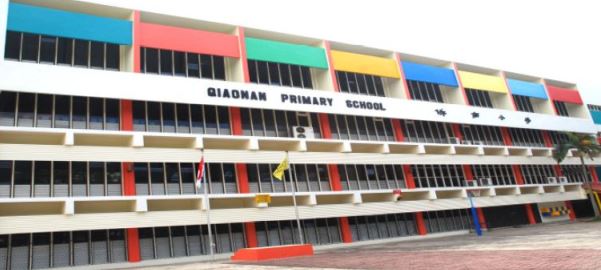
Most of us would not have heard of Qiaonan Primary, at least not until last Thursday.
No thanks to the decline in the fertility rate, some of the less popular schools in Singapore’s mature estates have witnessed a drastic decline in student enrolment numbers over the years. In a few extreme cases, there were barely enough pupils to fill up a class.
Last week, Qiaonan, Bedok West, Griffiths and Hong Kah primary schools became the latest victims of our population conundrum. In the name of optimal resource allocation, the Ministry of Education issued the schools with marching orders.
From next year, Bedok West Primary and Hong Kah Primary will be absorbed by Damai Primary and Lianhua Primary, respectively, while Qiaonan Primary and Griffiths Primary, both of which are in Tampines, will merge to form Angsana Primary.
In one fell swoop, the names of the four primary schools, Bedok West, Griffiths, Hong Kah and Qiaonan, will be erased from the national directory of schools.
This is by no means an isolated case. Ghim Moh Primary was absorbed into New Town Primary in 2009; and in 2000, Li Hua, Hong Dao and Ang Mo Kio North Primary were amalgamated to form Anderson Primary.
While the consolidations may appear as mere footnotes in the annual education report, the closure of the schools is likely to elicit more than a tinge of poignancy for some. Former pupils, teachers and even long-time residents will lament the unrelenting march of history that reshapes familiar neighbourhoods.
From a broader perspective, the demise of these institutions will also have repercussions on the discourse on Singapore’s future. How we deal with our past will have an impact on our sense of place and identity as Singaporeans.
Qiaonan’s Remarkable Story
Previously known as Kiau Nam School, Qiaonan Primary was founded by the Wenzhou Clan Association. In 1933, its first intake of 20 pupils started classes at a rented unit in the now-defunct Lorong Koo Chye. In 1940, the director of the school board donated his house at Paya Lebar Road to be used by the school and its pupils. It was closed during the Japanese Occupation, but reopened after the end of the World War II.
Student enrolment figures soared to 480 in the late 1950s. Makeshift classrooms were added to accommodate the influx of pupils. Classes were purportedly conducted within the confines of a Chinese temple at the peak of its space crunch. In all, the school clocked more than 80 years of history, a period that is longer than Singapore has been independent.
The Qiaonan narrative is not unique. Started in 1950, Griffiths Primary shared an equally illustrious past, chalking up 64 years of dedicated teaching.
Illuminating Singapore’s future through history
At a time when Singaporeans agonise over the meaning of citizenship and identity, we may do well to take stock of how we treat our history.
Qiaonan and Griffiths may not rank among the league of more established schools such as Raffles Institution, Anglo-Chinese School and Methodist Girls’ School, which draw a larger number of applicants each year than they can accommodate.
The humble beginnings of these neighbourhood schools, however, are the founding pillars of modern Singapore and no less important. Pioneer institutions such as Qiaonan were built on sacrifice, in the name of philanthropy and communal obligations. Their rich histories epitomise the unyielding spirit of resilience, hope and faith — a quintessential ingredient in the Singapore narrative.
These floundering schools served the needs of our society at a time when the prognosis for the little red dot was bleak. Behind such institutions are numerous unsung, nameless individuals who dedicated themselves to the missions of the schools. The school closures, announced unceremoniously, are akin to us flipping the pages of our history with scant recognition of the role of Singapore’s pioneer generation.
Can we do more to preserve our local heritage? Has due consideration been given to relocate the schools to housing estates with younger families? Or rejuvenation of the schools through combination/affiliation with secondary schools? Or revamping of the schools to teach other education models, such as social enterprise?
We can also consider honouring the pioneers of these neighbourhood schools by naming community spaces or buildings after them.
The closures of these schools may be inevitable in light of an ageing demographic landscape. Nonetheless, their humble beginnings and role in educating the pioneer generation of Singaporeans hold lessons on perseverance, hard work and collective ownership, which should be taught outside the classroom.
Remembering these schools and their founders can be our way of remembering our forefathers who trod the rocky path of independence on our behalf.
Dr Leong Chan-Hoong is Deputy Head of the Institute of Policy Studies (IPS) Social Lab, an independent centre for social indicators research. He is, concurrently, a Senior Research Fellow at IPS. This commentary was first published in TODAY newspaper on March 6, 2014.
Photo credits: Qiaonan Primary School


